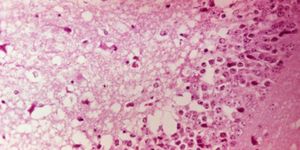One of the last existing populations of hunter-gatherers on Earth provide the rawest example of how vital exercise is for maintaining a healthy heart and lowering the risk for heart disease. From North-central Tanzania, University of Arizona scientists worked with the Hazda people, studying their physical activity habits.
Women gather food, and men hunt for food. This is what a day in the life looks like for individuals in the Hazda community. The amount of exercise they get on a regular basis amounts to a level much higher than that of the United States government standard recommendations. U.S. federal recommendations call for 150 minutes per week of moderate intensity physical activity or 75 minutes per week of vigorous activity or a combination of the two. These stipulations are met by Hazda individuals in two days but not met by most Americans in the entire week.
"Over the last couple of centuries, we've become more and more sedentary, and the big shift seems to have occurred in the middle of the last century, when people's work lives became more sedentary," said one of the lead researchers, David Raichlen. The Hazda study provides a picture of what exercise habits were like for all humans many generations ago.
The Hazda community has very low rates of cardiovascular disease and hypertension, even as individuals grow older. "In the U.S., we tend to see big drop-offs in physical activity levels when people age," Raichlen said. "In the Hadza, we don't see that. We see pretty static physical activity levels with age."
In their study of the Hazda, Raichlen and his collaborators from Yale University and Hunter College measured moderate to vigorous physical activity (MVPA), a known strong predictor of heart health, with chest-strap heart rate monitors and GPS trackers.
Raichlen said that he and colleagues were “trying to understand why physical activity and exercise improve health today, and one arm of that research program aims to reconstruct what physical activity patterns were like during the evolution of our physiology. The overarching hypothesis is that our bodies evolved within a highly active context, and that explains why physical activity seems to improve physiological health today."
Considering the factors that influence heart disease, there is still diet and other factors (genetics, smoking) to incorporate, but this study does make a clear statement on exercise and heart disease.
"Going forward, this helps us model the types of physical activity we want to be looking at when we explore our physiological evolution,” Raichlen said. “When we ask what kinds of physical activity levels would have driven the evolution of our cardiovascular system and the evolution of our neurobiology and our musculoskeletal system, the answer is not likely 30 minutes a day of walking on a treadmill. It's more like 75-plus minutes a day."
Raichlen's study was recently published in the
American Journal of Human Biology.
Source:
University of Arizona









